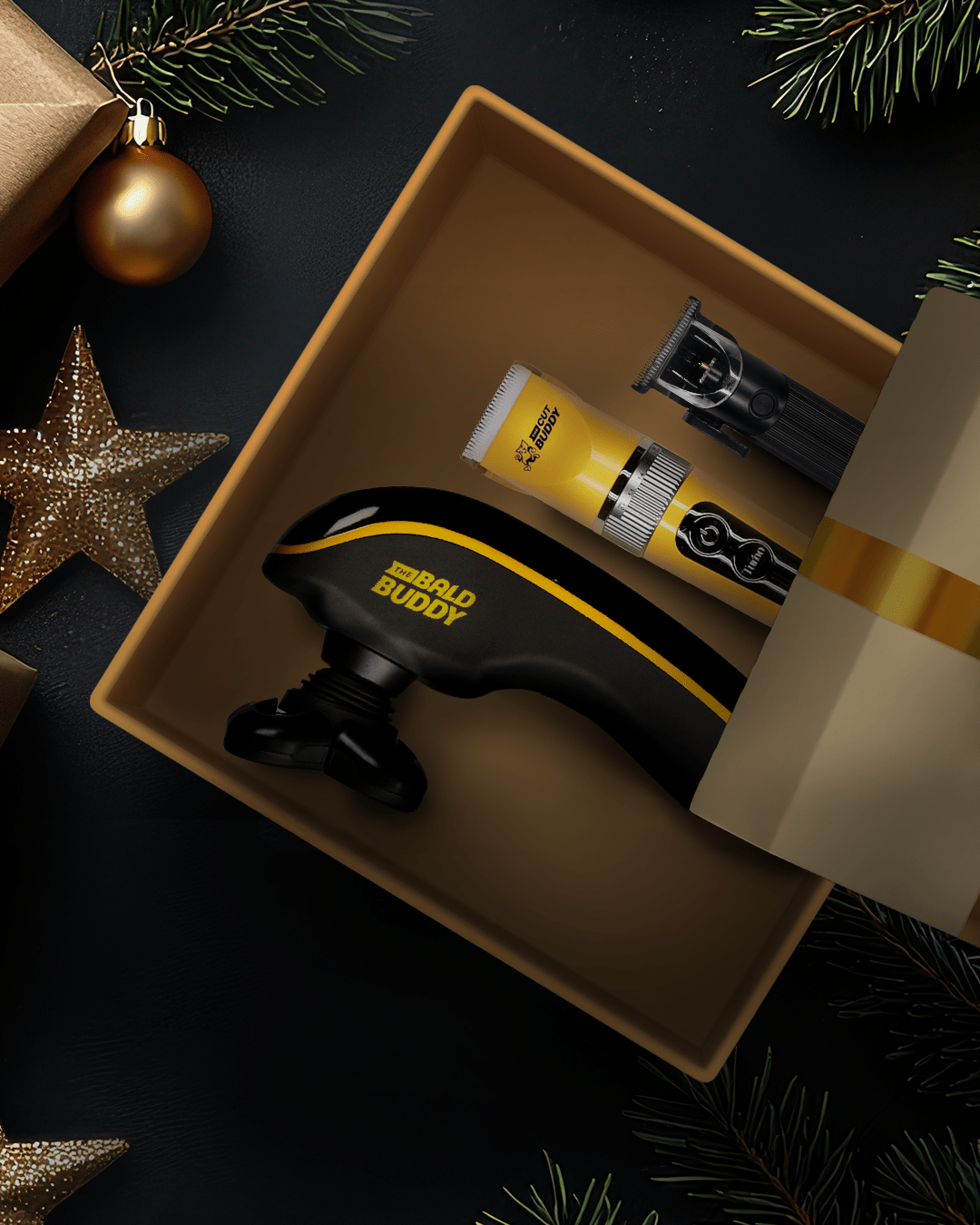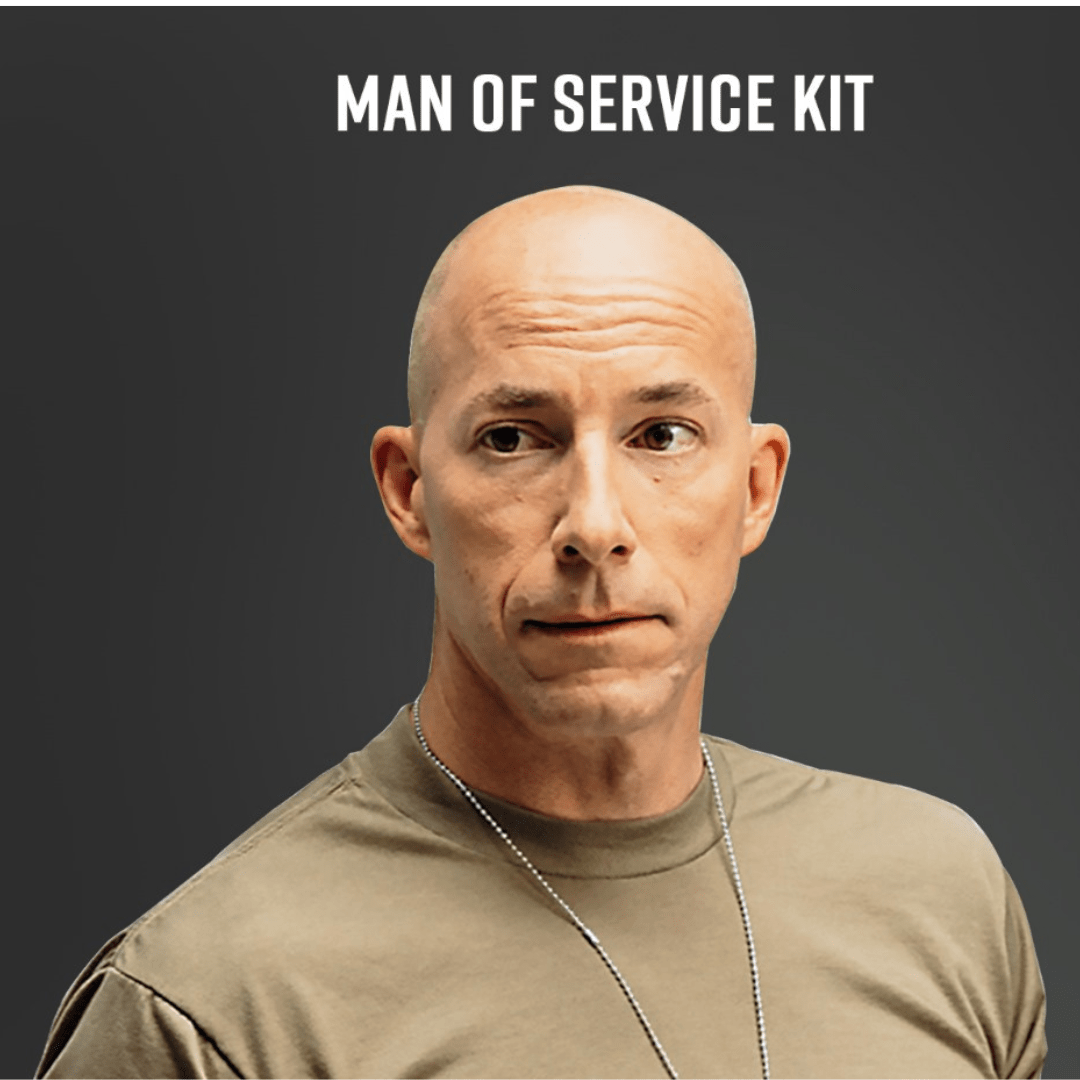Many of us attempt to take our grooming and hair styling into our own hands and end up with a home haircut gone wrong. Maybe you wanted to try bangs or decided your split ends need a trim. Maybe your beard was getting a bit shaggy, or the stubble on your head was getting to be a bit overwhelming. Whatever caused you to make these common at-home hair changes, often the result doesn't always go to plan.
If you've never tried DIY when it comes to cutting, trimming, or shaving hair, sometimes it can turn into a disaster. Edges can turn out uneven, dull razor blades don’t deliver clean lines or lead to a traumatic shave, and so on. Does that mean you have to wear a hat for a month while everything grows out, trim everything short, or even shave it all off? No, it doesn't have to be that way!
Don't panic and reach for the hat or the trimmers yet! The Cut Buddy Pros are here to try and help you learn how to fix home haircuts gone wrong.
Using the Right Tools for Your Home Haircut
The right tools are essential for great results, no matter what you're doing, and cutting your hair is no exception. Improper tools can make trying to cut hair or fix a haircut much worse. We've seen some of you reach for the nearest pair of scissors and, unfortunately, we're here to inform you that's a terrible decision. Scissors not meant for hair, old trimmer blades, and dull razor blades can make home haircuts a nightmare by pushing a section of hair rather than cutting it, increasing the chances of an uneven cut.
If you aren't sure if the blade on your trimmer or clipper at home is dull or how to tell when it’s time for a new one, here are some pointers on what a good blade will look like:
• No broken or missing teeth.
• The front and rear rail has not been ground flat.
• No chunks or nicks in the blade.
• Free from dirt, debris, and rust.
How can you tell if your haircutting scissors or shears are dull?
• Instead of hairs being cut, many get 'stuck' in the scissors, or the scissors leave behind noticeable uncut hairs.
• The scissors are generating too much noise, such as grinding or squeaking sounds.
Signs a razor blade is dull often include:
• The razor feeling rougher than usual against your skin
• The razor pulling rather than cutting hair
Start with Dry Hair to Easily Spot Home Haircut Mistakes
When trimming the hair on your head, you don't need to do anything too complicated to prep for cutting. Wash your hair, then dry it.
If you style your hair to be curly or naturally wavy, after drying, straighten your hair. This will allow you to see the areas that need to be fixed. However, skip this step if you have naturally curly or hair that coils. Let your curly hair dry naturally to see how the cut looks on your natural texture, as this will make it easier to see the places that need touching up.
While experts at barbershops or salons might be able to cut hair when it is wet, wet hair is very elastic and prone to breakage. Hair shrinks when it dries, so a trim that may have looked the right length wet may end up too short when dry.
Find out what you don't like about the haircut. Pinpointing what's wrong is the first step to understanding how to fix it. Are the layers too choppy? Is the right cheek edge of your beard lower than the left? Are the angles too severe around your face and need to be softened? These are all fixable problems once you know exactly what's wrong. When you know precisely what you don't like or what the issue is, you can move on to the next step.
Fixing Mistakes When You Cut Your Own Hair at Home
Now that you know what's wrong, there are many steps you can now follow to begin to fix it. One of the most helpful steps is to plug your issue into a search online and start looking at tutorials. Since the internet is vast and filled with expert hairstylists, many generously dedicate time and effort to creating video tutorials for beginners to help teach and fix issues like this.
The great thing about many online tutorials is that they are free. Since they are always available, you can usually watch or reread them as often as you need to feel confident enough to move on to picking up the scissors, clippers, or trimmers.
Hair Cutting Templates and Tools for Beginners
While you may have the right tools for the trim now, with a brand-new head for your Trim Buddy, Bald Buddy, or Cut Buddy Clippers—there's no shame in using other aids that can help guarantee a better cut.
Tools like The Cut Buddy Original and The Cut Buddy Plus are designed to assist those wanting to cut their hair at home without needing a professional stylist. The Cut Buddy's origins came from a frustrated young man named Joshua Esnard, who tried to cut and style his hair at home but grew overwhelmed by mistakes. That young man is now the CEO of The Cut Buddy, but he and the Cut Buddy Pros haven't forgotten what it was like to try to DIY hair trims, cuts, and beard shaping at home.
Hair templates like The Cut Buddy make it as easy as finding the right shape for your hair lines, holding the template where you want it, and trimming along the guides. If you find it challenging to hold onto a template, items like the Speed Racer Baber pencils make it easy to trace a perfect line to follow with your trimmer, razor, or clipper. Hair trimming templates take nearly all the guesswork out of hoping for the best and trying to fix a bad haircut at home by just using your eyes.
Are you ready to fix a bad haircut? Or are you prepared to put the past bad home haircuts behind you? The Cut Buddy Pros are ready to help! Let's get you fixed up and looking professional!




